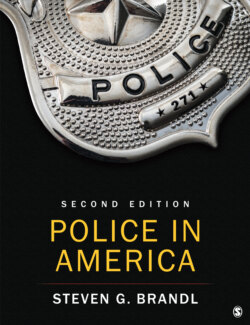Читать книгу Police in America - Steven G. Brandl - Страница 139
На сайте Литреса книга снята с продажи.
A Research Question
ОглавлениеAre Pedestrian Stops by the Police Effective?
Research shows that the use of street stops has increased dramatically in major cities across the United States in the past decade.14 The popularity of the strategy has raised questions about their effectiveness as a crime control strategy and whether these stops are made in a fair manner. Studies have shown that pedestrian stops have had some success at preventing crime,15 but their success at discovering or interrupting crime has been limited: From 2004 to 2010 in the New York City Police Department, 9.4% of stops resulted in an arrest, 2.9% resulted in the confiscation of drugs, and .25% of stops resulted in the discovery of an illegal gun.16
As for fairness of pedestrian stops, research has shown that stops have been disproportionately directed toward citizens of color.17 A recent study also showed that black and Hispanic citizens who were stopped were also more likely than white citizens to have force used upon them by the police.18 These research findings have been used to support civil lawsuits against the police to stop the widespread use of the strategy. Indeed, largely as a result of such lawsuits, the use of the strategy has declined in the last few years.
Yet other research has shown that stops may lead to a deterioration in positive views of the police and make residents less likely to report crime and cooperate with the police. The outcome is a long-term negative impact on public safety.19 As a result, there are good reasons to believe that the widespread use of pedestrian stops may cause more harm than good. The use of pedestrian and traffic stops as a police strategy is discussed in more detail in Chapter 6.
